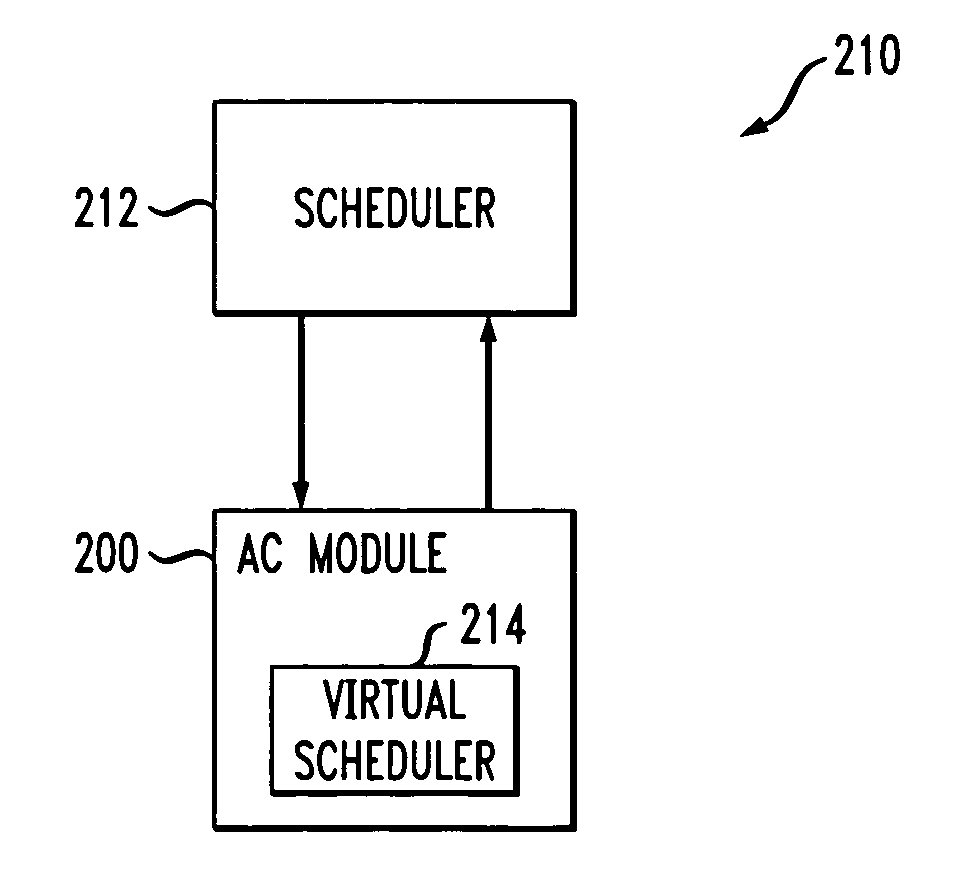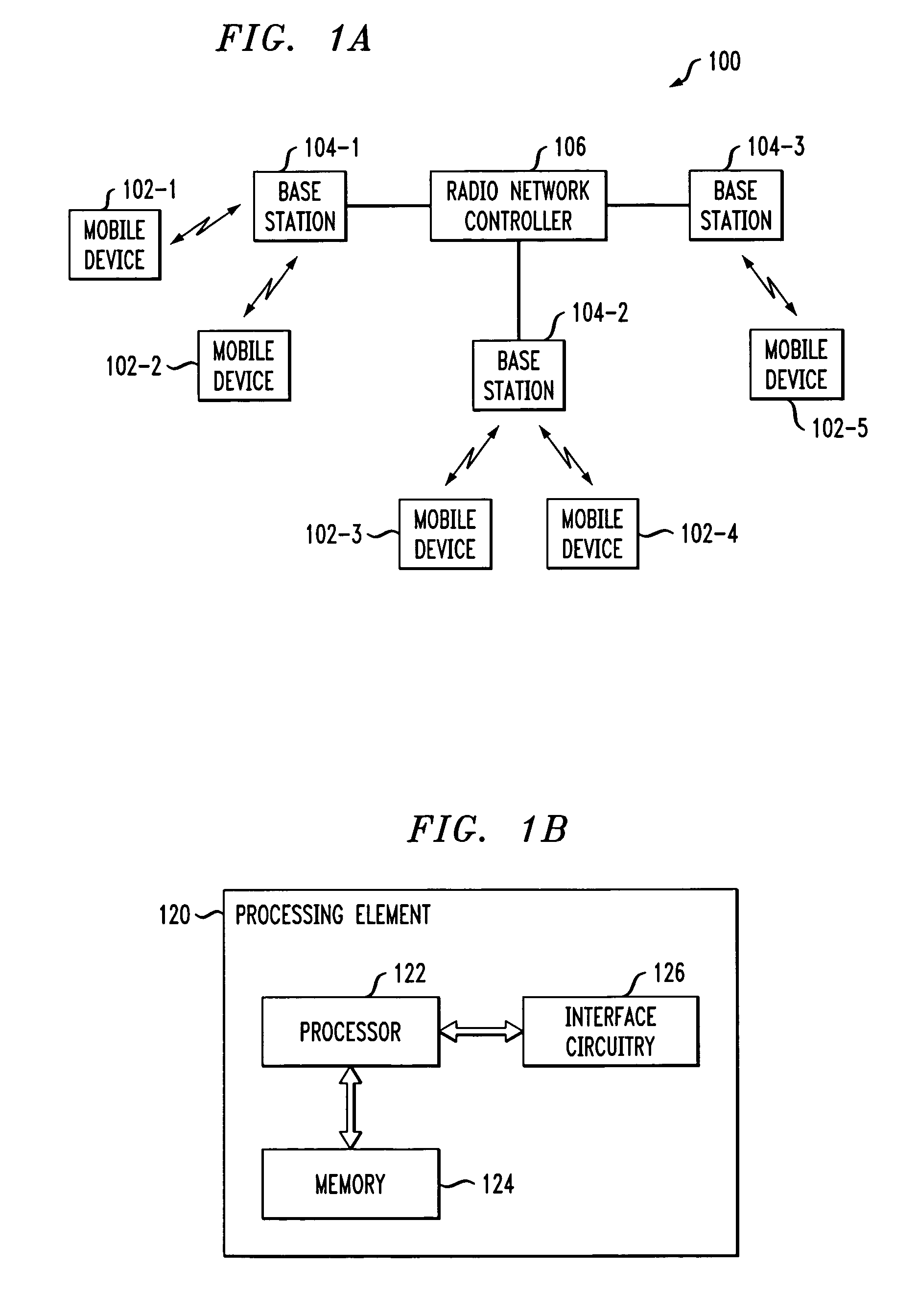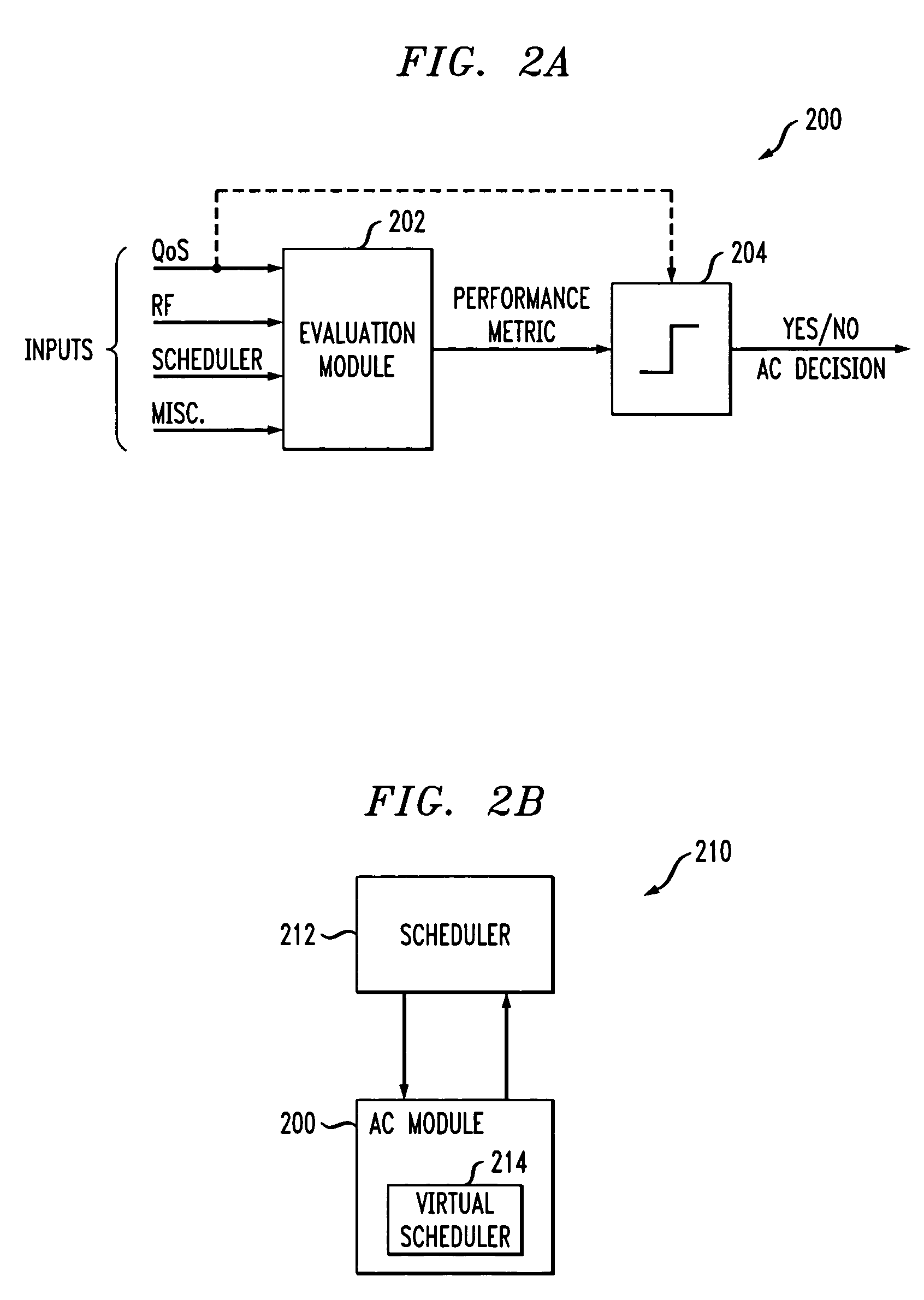Method and apparatus for quality-of-service based admission control using a virtual scheduler
a virtual scheduler and admission control technology, applied in the field of wireless networks, can solve the problems of increasing the difficulty of wireless packet data networks, affecting the quality of services, and general invalid assumptions
- Summary
- Abstract
- Description
- Claims
- Application Information
AI Technical Summary
Benefits of technology
Problems solved by technology
Method used
Image
Examples
example 1
AC for Best Effort Data Applications with Minimum Throughput Requirements
[0061]It is assumed that all the users have a best effort data application with minimum throughput requirements Rmin. In other words, the QoS requirements are only specified in terms of a minimum average achieved throughput per user.
[0062]It is also assumed that the scheduler in this example employs a basic C-RMAX algorithm to allocate time slots and power resources to the competing users. The C-RMAX algorithm is described in U.S. Patent Application Publication No. 2003 / 0214951, which is incorporated by reference herein. It should be noted that the C-RMAX algorithm is only used for illustration purposes and that all the concepts immediately transpose to other scheduling algorithms, such as, for example, the Proportional Fair, the Round Robin, the RMAX or the Largest Queue First scheduling algorithms. It is one particular advantage of the admission control techniques of the illustrative embodiments that such tec...
example 2
AC for VoIP Applications with Maximum Frame Error Rates
[0082]In the present example, we illustrate how the previous example relating to best effort data applications can be modified for VoIP applications. In order to avoid too much duplication, we only concentrate on those aspects that are changed and summarize those aspects that are the same for both applications. The described techniques can be extended in a straightforward manner to combinations of best effort data applications and VoIP applications, and to a wide variety of other types of other applications, alone or in combination.
[0083]It is assumed that all the users have a VoIP application, for which the QoS requirement is specified in terms of the maximum allowed frame error rate Fmax. The frame error rate includes all the packets that have not been received correctly and those that have been correctly received but with an unacceptably large delay.
[0084]For simplicity and to show that our framework is applicable for differe...
PUM
 Login to View More
Login to View More Abstract
Description
Claims
Application Information
 Login to View More
Login to View More - R&D
- Intellectual Property
- Life Sciences
- Materials
- Tech Scout
- Unparalleled Data Quality
- Higher Quality Content
- 60% Fewer Hallucinations
Browse by: Latest US Patents, China's latest patents, Technical Efficacy Thesaurus, Application Domain, Technology Topic, Popular Technical Reports.
© 2025 PatSnap. All rights reserved.Legal|Privacy policy|Modern Slavery Act Transparency Statement|Sitemap|About US| Contact US: help@patsnap.com



